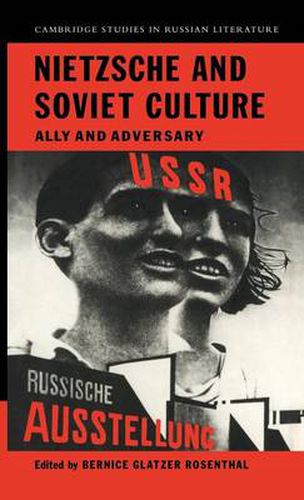Readings Newsletter
Become a Readings Member to make your shopping experience even easier.
Sign in or sign up for free!
You’re not far away from qualifying for FREE standard shipping within Australia
You’ve qualified for FREE standard shipping within Australia
The cart is loading…






This pioneering study documents the extent and diversity of the impact of Nietzschean ideas on Soviet literature and culture. It shows for the first time how these ideas, unacknowledged and reworked, entered and shaped that culture and stimulated the imagination of both supporters and detractors of the regime. It addresses key peculiarities of the Soviet reception of Nietzsche - the role of the prerevolutionary interest in the occult, the way revolution figured as an allegorical subject, the intertwining of art and ideology in the obsession with creating a new culture, the continuing Russian interest in Nietzsche as a religious thinker, and the manner in which censorship affected the dynamic of reception and influence. The book offers a fresh perspective on the origins, formative years, and subsequent development of Soviet literature and culture, and raises new issues for research and discussion.
$9.00 standard shipping within Australia
FREE standard shipping within Australia for orders over $100.00
Express & International shipping calculated at checkout
This pioneering study documents the extent and diversity of the impact of Nietzschean ideas on Soviet literature and culture. It shows for the first time how these ideas, unacknowledged and reworked, entered and shaped that culture and stimulated the imagination of both supporters and detractors of the regime. It addresses key peculiarities of the Soviet reception of Nietzsche - the role of the prerevolutionary interest in the occult, the way revolution figured as an allegorical subject, the intertwining of art and ideology in the obsession with creating a new culture, the continuing Russian interest in Nietzsche as a religious thinker, and the manner in which censorship affected the dynamic of reception and influence. The book offers a fresh perspective on the origins, formative years, and subsequent development of Soviet literature and culture, and raises new issues for research and discussion.